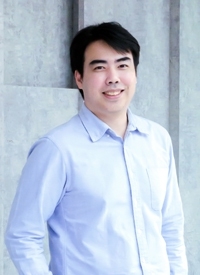ดร. นริศร กิติยานันท์
ผู้ช่วยศาสตราจารย์
We use induced pluripotent stem cells to model and study around development and prevention of diseases in the dish and find new approaches to cure disease.
- Tel: 66 (0) 2441-9003 – 7 Ext. 1366
- Email: narisorn.kit
 mahidol.ac.th
mahidol.ac.th - Ph.D. (Neurosciences), Mahidol University 2011, D.V.M., Chulalongkorn University, 2002
- Academic Program(s)
In my lab, we use stem cells especially induced pluripotent stem cells (iPS) for disease modeling, and find new approaches to cure disease. iPS cells were reprogrammed from patient-specific cells with known genetic diseases. They were characterized and stock for further uses. On the other hand, we are also producing some potential recombinant proteins to be used in combination with stem cells for cell therapy.
Book Chapter:
Suzuki M, McHugh J and Kitiyanant N. (2011) Human neural stem/progenitor cells: Mitotic and neurogenic effects of growth factors, neurosteroids, and excitatory amino acids. In: Hormones in Neurodegeneration, Neuroprotection and Neurogenesis. (Gravanis, A. and Mellon, S. Eds), Wiley-Blackwell, pp. 331-345.
1.Kitiyanant, N., Kitiyanant, Y., Svendsen, C.N., Thangnipon, W. BDNF-, IGF-1- and GDNF-secreting human neural progenitor cells rescue amyloid β-induced toxicity in cultured rat septal neurons. Neurochemical Research 2012;37(1):143-152.
2.Kobolák J, Molnár K, Varga E, Bock I, Jezsó B, Téglási A, Zhou S, Lo Giudice M, Hoogeveen-Westerveld M, Pijnappel WP, Phanthong P, Varga N, Kitiyanant N, Freude K, Nakanishi H, László L, Hyttel P, Dinnyés A. Modelling the neuropathology of lysosomal storage disorders through disease-specific human induced pluripotent stem cells. Exp Cell Res 2019;380(2):216-233.
3.Chandrasekaran A, Avci HX, Ochalek A, Rösingh LN, Molnár K, László L, Bellák T, Téglási A, Pesti K, Mike A, Phanthong P, Bíró O, Hall V, Kitiyanant N, Krause KH, Kobolák J, Dinnyés A. Comparison of 2D and 3D neural induction methods for the generation of neural progenitor cells from human induced pluripotent stem cells. Stem Cell Res 2017;25:139-151.
![]()




